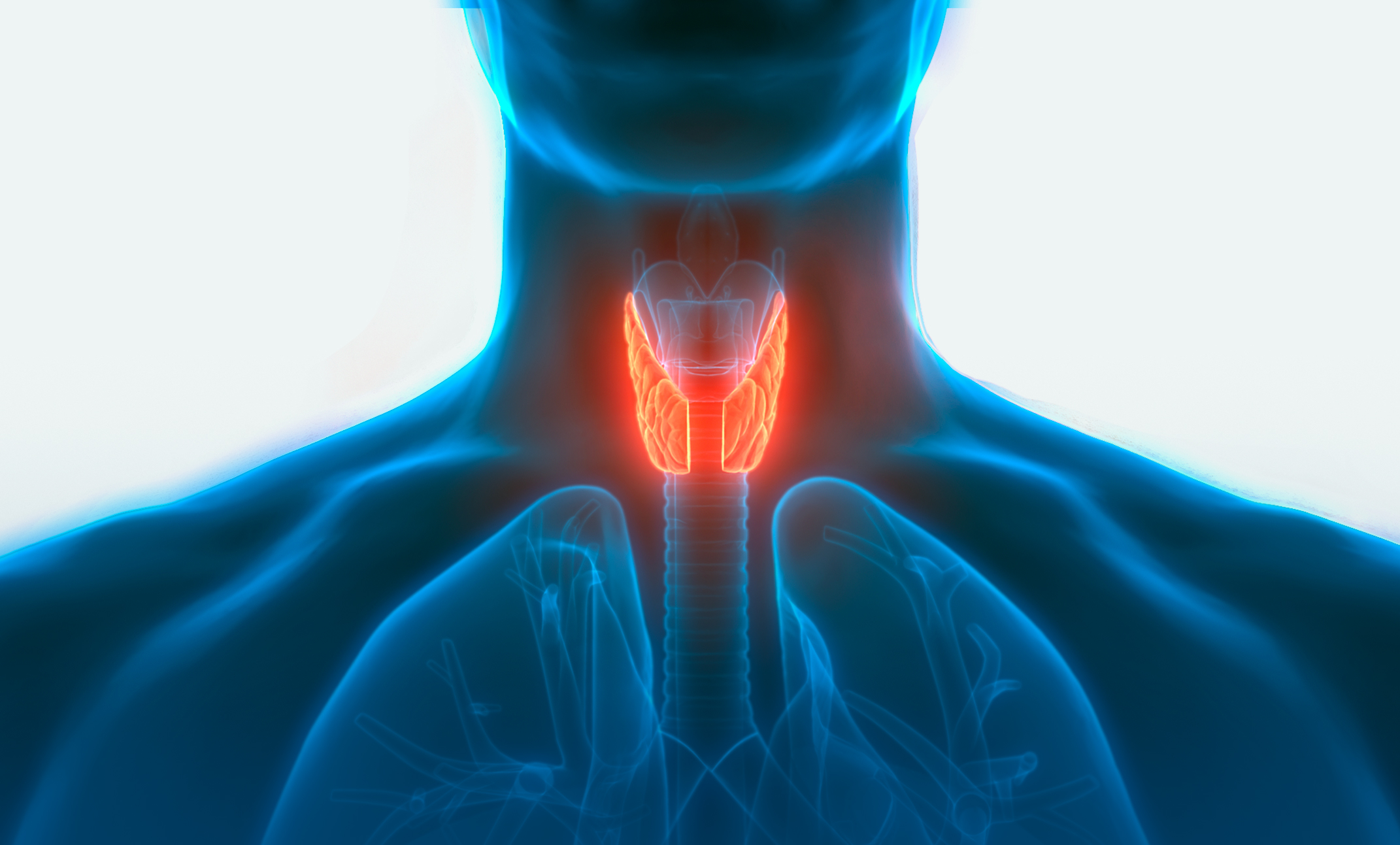Various health problems that can arise as a result of a dysfunction in the thyroid, therefore, it is important to bring awareness on this topic.
What is the thyroid gland?
The thyroid gland is a small organ that’s located in the front of the neck, wrapped around the windpipe (trachea). It’s shaped like a butterfly, smaller in the middle with two wide wings that extend around the side of your throat.
The thyroid controls your metabolism with a few specific hormones — T4 (thyroxine, contains four iodide atoms) and T3 (triiodothyronine, contains three iodide atoms).
This is all supervised by something called the pituitary gland. Located in the center of the skull, below your brain, the pituitary gland monitors and controls the amount of thyroid hormones in your bloodstream. When the pituitary gland senses a lack of thyroid hormones or a high level of hormones in your body, it will adjust the amounts with its own hormone. This hormone is called thyroid stimulating hormone (TSH). The TSH will be sent to the thyroid and it will tell the thyroid what needs to be done to get the body back to normal.
What are the thyroid dysfunction and disease?
Thyroid disorders can range from a small, harmless goiter (enlarged gland) that needs no treatment to life-threatening cancer, however, the most common thyroid dysfunctions are hyperthyroidism and hypothyroidism which is caused by an abnormal production of thyroid hormones.
To learn more about the thyroid dysfunction and disease and how to diagnosis and treat them, watch our webinar replay here.
Author: Dr. Zeeshan Hayat, General Doctor at TruDoc





